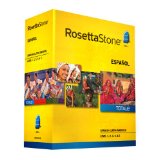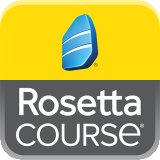Getting ready for your first business trip abroad can be very stressful! I’ve put together a comprehensive list of items that can  help you prepare, hopefully cutting down on your anxiety. Click here to read the first installment, which covered passports, travel advisories, and vaccinations.
help you prepare, hopefully cutting down on your anxiety. Click here to read the first installment, which covered passports, travel advisories, and vaccinations.
Eating and drinking. It’s not always the best idea to eat certain foods when traveling internationally, and the same goes for drinking water. In Manila (and many other places!) they don’t recommend you use tap water. Don’t forget that if you are served a soda in a glass with ice that the ice may have made from tap water. Many nicer hotels filter their water but until you know drink bottled water.
This is especially important if you are pregnant! When I was seven months pregnant my best friend got married in Mexico. The only way my doctor would let me go was if I promised to only eat foods that were cooked. That eliminated guacamole and fruit, which was not super fun, but I still had a great time. This can apply to many countries that you may travel to even if you’re not pregnant. The link I shared last week about finding out vaccination recommendations based on location can also be used to find out information about what is safe to eat and drink. You’ll find many other helpful categories based on your destination down there as well so take a look at all of the provided information on the page.
While food safety is obviously important, it’s also nice to know what your options are for getting your meals. When I go to Manila I usually only eat at either the hotel or the office. This was primarily because it was most convenient, but also because of safety concerns. If this is your plan as well go to your hotel website to see if they have information on their food options. If it’s not on their website try to email them for the information, or do a Google search to see if something comes up. If that doesn’t work make a call to the hotel. If they don’t speak English ask for someone that does. Find out when the kitchen is open too. In Manila I work US business hours which means my breakfast is at dinner time, my lunch is in the middle of the night, and my dinner is the glorious hotel breakfast buffet. See what I mean?? The one time I stayed at a different hotel than usual I didn’t check their restaurant hours, and was pretty angry to realize I had missed the kitchen by thirty minutes and would have to wait another seven hours to eat.
Transportation. One scary part about traveling to the Philippines for the first time was getting from the airport to my hotel. There are just a lot of unknowns. The State Department has a website where you can find the safest forms of travel based on your destination. The site also has links to the countries’ official travel websites, which is helpful in getting more detailed information about available transportation. I always take the hotel car in Manila because it’s the easiest, safest way to get from my airport to the hotel. As reader Santastico noted during last week’s post, “It may cost more but it’s a business expense, and your safety comes first.”
The CDC also has a section on selecting safe transportation when you enter your travel destination on their website. These sites, along with consulting your travel department and hotel, should get you to your destination safely. Be sure you check with your hotel prior to arriving to find out how much a taxi or private car should cost when traveling from your hotel from the airport, then confirm this amount with the taxi driver before departing. I’ve never been scammed but I know people who have.
Also be sure you have some tip money available when traveling if it’s recommended. Tipping etiquette varies widely across the globe. In Europe people tend to tip minimally, and in parts of Asia tipping is seen as rude. So you want to be sure you know what the custom is! Try out the app GlobeTipping. It’s highly recommended for navigating tipping internationally.
Language barriers.
When traveling internationally there are likely going to be language barriers (Pictured: Rosetta Stone Spanish). If you’re not lucky enough to speak the language of your host country, be sure you have the full name, address, and phone number to places where you are going written down ahead of time. That way there’s nothing lost in translation. You could learn a few words of their language but they may think you know their language well if you start speaking it so watch out! It might be good to learn the phrase, ‘I don’t speak ______________,’ just in case that happens. One option is to try the Google Translate app to help you translate certain words, but be careful with that too because words may have different meanings internationally just as they do here in the US. Through the State Department website you can visit a country’s official travel page to see if they have helpful words and phrases to use (here’s an example for the Philippines). When all is said and done having addresses and phone numbers written down is your best bet to getting around, then you can learn words along the way.
Next week we’ll cover Credit Cards, Currency Exchange, Points, and Cell Phone, Data, and Text Plans.
Readers, what have your experiences been with international food, transportation, and language barriers?
****************************************************************************
Have a travel question or suggestion? Send it to RoadWarriorette @ gmail.com.
Follow Road Warriorette on Twitter, Facebook, and Pinterest!
This post may include affiliate links. Thanks for your support!




A few other tips:
The is a small series “Emergency (Language)” – check Amazon. it is a small book, about the size of a large travel wallet, that has phrases in English and the target language. The book has many emergency situations covered AND in each section, a place where the native speaker can point to the phrase that applies. Less than $10 if I recall.
As for transportation, print out the name and address of the hotel and businesses you will be visiting in both English and the local language. Invaluable in China and any other place that does not use a roman alphabet.
I second the drinking water thing, and would go so far as to use bottled water for brushing your teeth. Be careful of accidently getting water from the shower into your mouth, nose, eyes. If you do not have bottled water available, use boiled water. Look into getting something like a Steripen – a little device that uses UV light to purify water.
Finally, I am a fan of Rosetta Stone. However, you need to pace yourself. Try to do too much too fast and you will conuse yourself. Spend no more than 1-2 hours per day so that you will absorb the lessons.
Good tips!!! Here are some actions I take myself:
1) Once you book your hotel reservation, contact the hotel to arrange transportation from the airport. As I mentioned in my previous comments, no need to do this if you are in certain European countries or in the US where reliable taxis and public transportation is available. However, in some Asian and Latin American countries and where language is a barrier I would always get a hotel car at least for you to get to your hotel and then you may get familiar with other alternatives.
2) Once at the hotel, load your pockets with hotel business cards that show the hotel directions in the local language. If I need to take a taxi to go back to the hotel I give that to the driver. No need to try to tell him where you are going. Once in Bangkok I tried to explain to the driver I was going to the Conrad hotel. He kept repeating Kunlat, Kunlat and i had no idea what he had in mind. Also, when you get at the hotel, try to get familiar with the surroundings. Any landmark or building that you can see from a distance that can at least give you an idea if the driver is heading to the right direction.
3) As for water I am very particular. I don’t drink tap water in the US so I won’t do that abroad. If the hotel does not provide free bottled water I find a little shop that sells them and stock in my room. I brushed my teeth with mineral water in Vietnam but in most Asian countries I don’t do that. Unless you know you have a cut or something in your mouth. I avoid ice even if I am told it comes from filtered water. I avoid cold tea and juices that need water or ice. I stick with bottled sparkling or still water or soda (only time I drink soda ever). Or in a dinner wine or beer.
4) For language, you may need on the streets since most business places and hotels will have someone that speaks English. There are many apps available that will help.
Just to add to my previous comment:
4) Food: of course it depends on the country you go but in Asia and Latin America I avoid anything that is raw. No salads!!! No sushi!!! No raw fruits/vegetables without peels. I am all for trying local cuisine and I really explore the local food but always careful on where and what I eat. I had terrible food poisoning in Thailand and Malaysia where I needed the hotel to call a doctor to my room. Thus, better safe than sorry. Also I avoid very spicy foods but that is just me. I always bring my “own pharmacy” with me. If I am going on a long international trip to Asia I usually ask my doctor for a prescription of antibiotics (Cipro) just in case. I also bring some electrolyte powder replacement you can add to water and get you hydrated if needed.
if you’re anywhere for more than a week, definitely register with American Consular Services via https://step.state.gov/step/. You never know!
Don’t trust botteled water. I stick with canned soda. I’ve been in places where I caught a glimpse of guys pouring water from a bucket into clear water bottles, and adding a new cap. They used pliers to tighten the seal. You probably can get contaminated soda as well, but at least it is more difficult to make.
great tips thanks! and good tips from Santastico as well. I’m currently living in London, so when i go to business trip in NYC i particularly worried about transportation cause i guess i’m not assertive enough for texis. so i always go to the same car rental company and they take good care of me every time, so i recommend them it’s http://www.prestigecarrental.com/
and thanks again for the great tips!
I have been using an app called Duolingo. It teaches you a select number of languages, but its free! You can do it on your computer too. It has you practice speaking and typing the language so you get both sides.
Thanks for all the great tips in the post and comments. I would add that differences in culture extend beyond, e.g., tipping customs and into appropriate business dress. If you are traveling to a new country on business alone or with others who also are newbies, it’s best to investigate how people (especially women) dress in that culture generally and for business. What passes for stylish and acceptable business dress in the United States often is too flashy or otherwise inappropriate in other countries. In the absence of good information about the country to which you are traveling (which typically is available on the Internet), pack clothing that is very conservative–suits with trousers or longer skirts (at least to the knee), in basic colors, with white or ivory shirts/blouses and flesh-toned underwear.